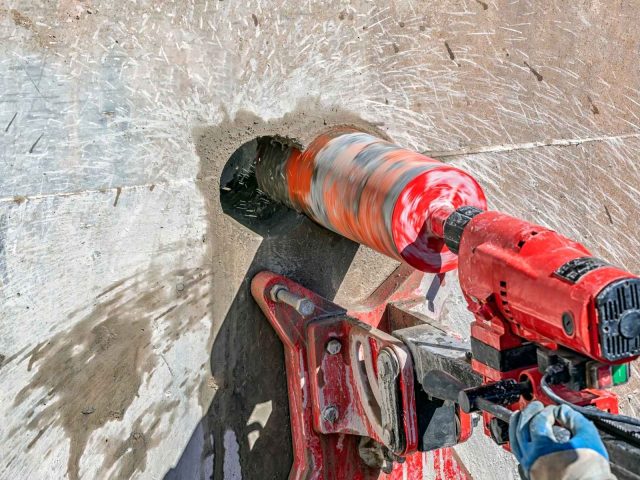Blog
Introduction
Building maintenance is a critical aspect of the lifecycle of a building, but it is often overlooked. Inadequate maintenance can lead to structural deterioration, safety hazards, increased maintenance and repair costs, and declining property values. Typically, building maintenance tends to be reactive rather than preventive, with owners addressing issues such as roof leaking, toilet leaking, wall cracks, or water intrusion only after they occur, rather than anticipating them. Many adhere to the saying, “if it ain’t broke, why fix it?” because preventive measures such as PU injection, waterproofing repair, grouting, balcony repair, and engaging repair specialists or waterproofing contractors may seem tedious or costly, even though they can prevent more serious structural problems and expensive building repairs in the long run.
The importance of proactive building maintenance planning is generally acknowledged by experts in the building management industry [1]. In addition, it is of utmost importance to examine the consequences of neglecting building maintenance, with a focus on safety risks, financial impacts, environmental degradation, and legal liabilities. It also highlights modern techniques, such as polyurethane (PU) injection, carbon fibre strengthening, and advanced diagnostic scanning, that can help mitigate these negative outcomes.
1. Safety and Structural Hazards
Neglecting building maintenance jeopardises both structural safety and public health. Over time, undetected issues such as cracks, water intrusion, and corrosion can lead to significant damage. It is crucial to identify and address the important aspects in maintenance management such as staff competency, maintenance asset record, maintenance schedule, plan for maintenance operation and thorough review of the maintenance process in order to ensure long-term performance and occupant safety in buildings [2].
One of the important hazards to be addressed is water leaks, which often indicative of deeper problems within the building. Water leakage can be remedied using techniques such as polyurethane (PU) injection, thermoplastic membranes, and waterproof coatings, all of which are effective in mitigating moisture intrusion, in addition to addressing the source of water leakage from plumbing/ HVAC systems. Other than that, if the cracks in floors or structural walls are left unaddressed, they can worsen and compromise the building’s structural integrity. These cracks are typically repaired through methods like epoxy injection or surface patching. In more serious cases, structural reinforcement may be necessary, utilising carbon fibre wraps or steel plate anchoring.
Professional building repair services typically utilise Non-Destructive Techniques (NDT) such as Ground Penetrating Radar (GPR) and ferro scanning to detect hidden weaknesses within concrete or steel reinforcements. This ensures that safety assessments are accurate, before destructive sampling is done for further assessment, allowing for early intervention before any catastrophic failure occurs.
2. Cost Escalation Due to Deferred Maintenance
In addition to safety hazards, deferred maintenance often results in higher long-term repair costs. Small issues, if left unresolved, can develop into larger and more expensive problems. It is proven that neglecting maintenance shortens the service life of building components and increases future repair expenses, which correlates to the famous saying “penny wise, pound foolish” [3].
Furthermore, the lack of preventive maintenance led to significant deterioration that required costly structural overhauls [4]. If proactive measures, such as scheduled inspections and early repairs, had been taken, repair costs could potentially have been greatly reduced.
In advanced stages of deterioration, ground stability may be compromised. In such cases, ground improvement methods like micro-piling, jet grouting, or soil stabilization may be necessary. These solutions are more complex and expensive than standard maintenance, further exaggerating the financial consequences of delaying maintenance activities.
3. Property Value and Occupant Satisfaction
A poorly maintained building loses its marketability. Visible signs of neglect, which include leaks, peeling finishes, stained walls, and malfunctioning systems, affects occupant confidence and reduces asset value. Unresolved maintenance issues contributes significantly towards user dissatisfaction, which even leads towards service charge defaults in shared/strata properties [5].
Furthermore, it is confirmed that tenant retention in Malaysia’s residential and commercial sectors is closely tied to building upkeep [6]. Regular repairs and visible safety features improve trust and satisfaction, while neglected buildings suffer from higher vacancy and reduced rental income.
To restore confidence, some facilities management teams employ 3D scanning and ultrasonic pulse velocity (UPV) testing to identify internal flaws, allowing for non-invasive diagnostics. These technologies reduce guesswork and help preserve the property’s value through informed interventions.
4. Environmental and Operational Efficiency
Poor maintenance significantly impacts environmental performance. Inefficiencies in HVAC systems, plumbing leaks, and broken windows can lead to increased energy consumption and higher carbon In addition, design flaws, combined with insufficient maintenance, will incur higher utility costs and greater resource wastage in high-rise buildings [7].
Regular maintenance, such as cleaning filters, sealing cracks, and realigning ducts, can extend the lifespan of these systems and enhance energy efficiency. The design of various systems in the premises should emphasise the importance of integrating long-term serviceability into the design process [8]. By planning buildings with maintenance in mind, we can sustainably improve energy and environmental performance.
In addition, maintenance considerations should be define in the early design phase to facilitate easier long-term asset preservation and minimise the need for retrofitting [1].
5. Legal Non-Compliance and Liability
In addition to technical and financial risks, failing to maintain buildings can lead to regulatory penalties and legal issues. In Malaysia, building owners are required to comply with safety codes, fire regulations, and maintenance protocols. Negligence, particularly in publicly accessible or strata-managed buildings, can result in fines, forced shutdowns, or civil lawsuits.
Professional inspections conducted by Professional Engineer (PE) are essential for maintaining compliance. These structural assessments ensure that buildings meet established codes and provide documented evidence of due diligence. Inspection tools such as ferro scanning, core testing, and ultrasonic pulse velocity (UPV) offer objective data that support inspection reports and help defend against liability claims.
On the other hand, most compliance failures occur not due to a lack of intention but rather from inadequate maintenance planning and a shortage of technical expertise [5]. Therefore, incorporating certified inspections and using modern diagnostic tools is not only best practice but also serves as a legal safeguard.
Conclusion
Neglecting building maintenance can lead to a series of problems, including safety hazards, rising costs, decreased property value, and potential legal issues. Fortunately, these negative outcomes are largely preventable through strategic planning, thoughtful design, and the use of modern repair technologies. By incorporating preventive maintenance techniques into maintenance processes, building management can become quicker, safer, and more cost-effective. Additionally, transitioning from a reactive to a preventive maintenance mindset promotes long-term performance and ensures compliance with safety regulations.
With regards to the Malaysian and global context, sustainable buildings are not just those built with green materials and techniques, but also those buildings that are maintained with care, foresight, and technical rigour.
References
[1] Khalid, E. I., Abdullah, S., Hanafi, M. H., Said, S. Y., & Hasim, M. S. (2019). The consideration of building maintenance at design stage in public buildings: The Current Scenario in Malaysia. Facilities. Retrieved on 17th June 2023 from https://www.researchgate.net/profile/Shahrul-Said/publication/332207407_The_consideration_of_building_maintenance_at_design_stage_in_public_buildings_The_current_scenario_in_Malaysia/links/5d494aa3a6fdcc370a7fc1a9/The-consideration-of-building-maintenance-at-design-stage-in-public-buildings-The-current-scenario-in-Malaysia.pdf
[2] Zawawi, E. M. A., Kamaruzzaman, S. N., Ithnin, Z., & Zulkarnain, S. H. (2011). A conceptual framework for describing CSF of building maintenance management. Procedia Engineering, 20, 110–117. Retrieved on 17th June 2023 from https://www.sciencedirect.com/science/article/pii/S1877705811029547/
[3] Yasin, M. N., Mohamad Zin, R., Hamid, M. Y., Zakaria, M. A., & Deraman, R. (2019). Deferred maintenance of buildings: A review paper. IOP Conference Series: Materials Science and Engineering, 513, 012028. Retrieved on 17th June 2023 from https://iopscience.iop.org/article/10.1088/1757-899X/513/1/012028/
[4] Wei, C. X., & Mat, S. (2021). Building condition assessment and preventive maintenance of the old shophouses in Raub, Pahang. Research in Management of Technology and Business, 2(1), 1280–1293. Retrieved on 17th June 2023 from https://publisher.uthm.edu.my/periodicals/index.php/rmtb/article/view/1920
[5] Dzulkifli, N., Sarbini, N. N., Ibrahim, I. S., Abidin, N. I., Yahaya, F. M., & Nik Azizan, N. Z. (2021). Review on maintenance issues toward building maintenance management best practices. Journal of Building Engineering, 44, 102985. Retrieved on 17th June 2023 from https://www.sciencedirect.com/science/article/abs/pii/S2352710221008433/
[6] Hauashdh, A., Jailani, J., Abdul Rahman, I., & AL-fadhali, N. (2020). Building maintenance practices in Malaysia: A systematic review of issues, effects and the way forward. International Journal of Building Pathology and Adaptation, 38(5), 653–672. Retrieved on 17th June 2023 from https://www.sciencedirect.com/org/science/article/abs/pii/S2398470819000644/
[7] Islam, R., Nazifa, T. H., Mohammed, S. F., Zishan, M. A., Yusof, Z. M., & Mong, S. G. (2021). Impacts of design deficiencies on maintenance cost of high-rise residential buildings and mitigation measures. Journal of Building Engineering, 39, 102215. Retrieved on 17th June 2023 from https://www.sciencedirect.com/science/article/abs/pii/S2352710221000711/
[8]Building and Construction Authority (BCA). (n.d.). Design for Maintainability. Retrieved on 17th June 2023 from https://www1.bca.gov.sg/buildsg/facilities-management-fm/design-for-maintainability
Recent Posts
- Concrete Scanning – Ground Penetrating Radar (GPR) Benefits And Advantages For Renovation Projects
- Purpose And Benefits Of Concrete Coring In Buildings And Its Outcome
- Tile Grouting: What It Is And Why It Matters For Waterproofing
- Pu Injection For Waterproofing
- The Dangers Of Neglecting Water Leaks: From Health Risks To Costly Structural Damage
Categories
Archives
- February 2025
- January 2025
- December 2024
- November 2024
- October 2024
- September 2024
- August 2024
- July 2024
- June 2024
- May 2024
- April 2024
- March 2024
- February 2024
- January 2024
- December 2023
- November 2023
- October 2023
- September 2023
- August 2023
- July 2023
- June 2023
- May 2023
- April 2023
- March 2023
- February 2023
- January 2023
- December 2022
- November 2022
- October 2022
- September 2022
- August 2022
- July 2022
- June 2022
- May 2022
- April 2022
- March 2022
- February 2022
- January 2022
- December 2021
- November 2021
- October 2021
- September 2021
- August 2021
- July 2021
- June 2021
- May 2021
- April 2021
- March 2021
- February 2021
- January 2021
- December 2020
- November 2020
- October 2020
- September 2020
- August 2020
- July 2020
- June 2020



